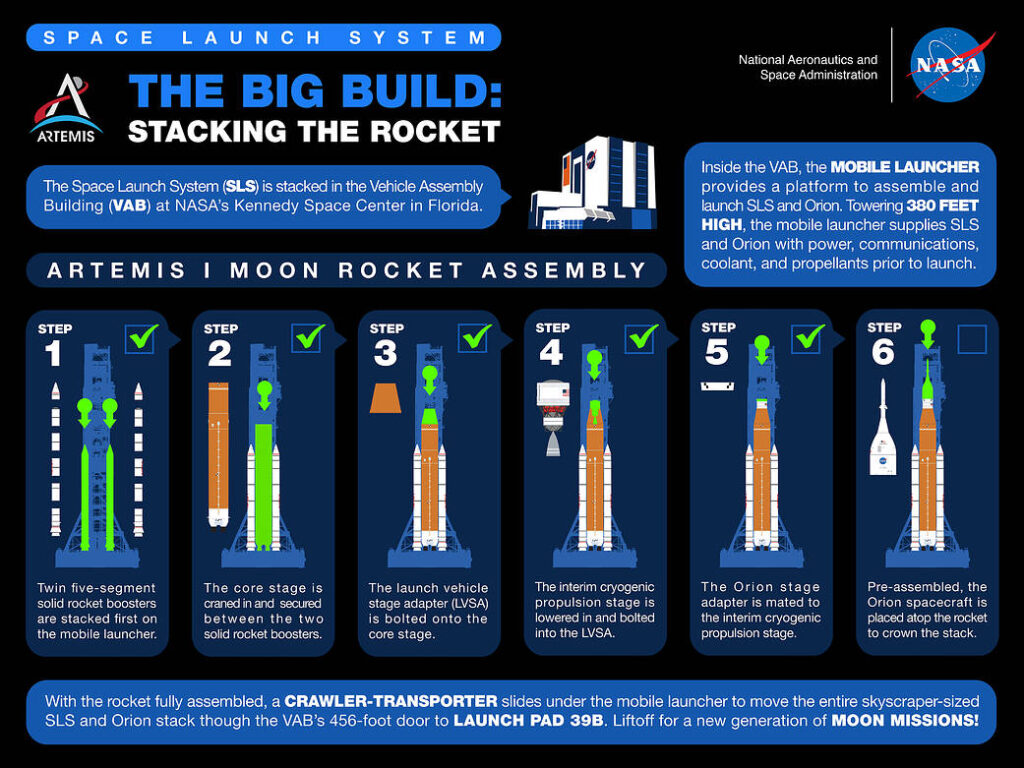This content has been archived. It may no longer be relevant

Welcome to my first official post! This one is about NASA’s new Space Launch System, which is expected to roll out to its launch pad this week for a “wet dress rehearsal.” According to NASA, SLS is the world’s most powerful rocket. It can carry more payload to deep space than any other vehicle. SLS is also expensive, costing more than $11 billion just to develop the first version. Some wonder if SLS is fiscally sustainable going forward, but for now, NASA is counting on SLS for the future of human space exploration .
What is a wet dress rehearsal? It’s basically a practice ahead of the actual launch. During this test, NASA will fill up the rocket with fuel, conduct a countdown and testing and then drain the tanks. If issues occur during before fueling, NASA can potentially retest the next day. NASA is planning to actually launch SLS later this year.



SLS is designed to be evolvable, which makes it possible to fly more types of missions, including human missions to to the Moon and Mars and robotic scientific missions to places like the Moon, Mars, Saturn and Jupiter.

An important upgrade will be a new upper stage for the rocket.

SLS is part of a broader architecture of systems being developed to take astronauts back to the moon. The lunar missions are referred to as the Artemis missions. Artemis I is the first planned demonstration mission of SLS; the Orion crew vehicle (no one on board for first test); and supporting ground systems. This is what will follow the dress rehearsal. But it will be at least a couple of months before the Artemis I launch.

Some parts of the rocket are new and others date back to the shuttle era, though upgraded with modern features. Aerojet Rocketdyne, for example, is upgrading an inventory of 16 RS-25 space shuttle engines to SLS performance requirements. Two shuttle-derived solid rocket boosters provide more than 75 percent of the vehicle’s thrust during the first two minutes of flight. Northrop Grumman’s Northern Utah team modified the original shuttle’s configuration of four propellant segments to a five-segment version.


Our next post, SLS: the Flip Side, will highlight SLS’s program challenges in graphs. Stay tuned.
More facts on SLS: SLS Fact Sheet December 2021 (nasa.gov)







whoah this blog is wonderful i love reading your articles. Keep up the good work! You know, lots of people are searching around for this information, you could help them greatly.
Thank you. That’s my goal…to help people learn more about these programs.